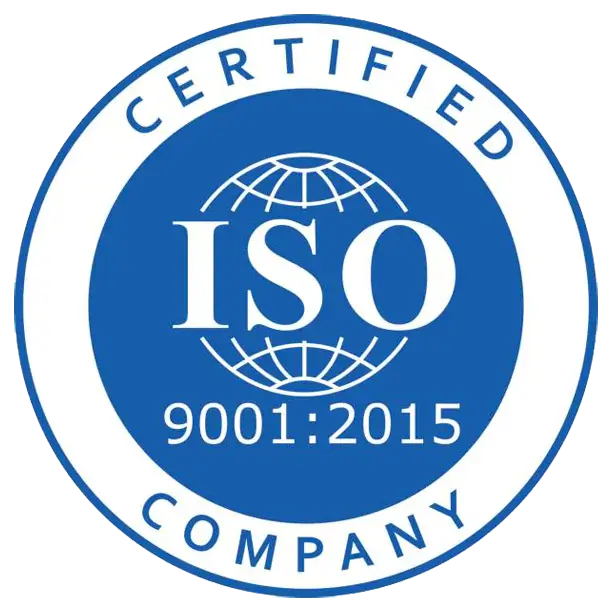
E-commerce marketplaces like Amazon and eBay have transformed retail for both buyers and sellers. An online marketplace can provide a massive opportunity to build a scalable business. However, creating one requires significant upfront investment and overcoming challenges. This article provides an in-depth analysis of key considerations to determine if you should build your own e-commerce marketplace.
What is an E-Commerce Marketplace?
An e-commerce marketplace is an online platform that facilitates transactions between buyers and third-party sellers. The operators of the marketplace provide the technology, payment systems, logistics support and laid down guidelines and policies. Sellers can sign up to list their products on the marketplace which buyers can discover and purchase.
Well-known examples include eBay, Etsy, Amazon Marketplace, Shopify, Faire and Walmart Marketplace. These platforms allow sellers ranging from individuals and small businesses to large brands to access a much wider customer base.
Benefits of Building an E-Commerce Marketplace
Building an e-commerce marketplace has the following key advantages if executed successfully:
1. Access to a Vast Market:
An e-commerce marketplace opens up sellers to a huge buyer base running into millions. Most marketplaces spend significantly on marketing to drive free organic traffic to their platform. However, to access this benefit, it is important to first ask yourself the question of the cost of creating an online marketplace and consider the pros and cons to estimate the payback time.
2. Technology and Infrastructure:
Operators of marketplaces invest in building robust technology platforms and infrastructure for payments, logistics, cataloging, search, recommendations etc. Sellers leveraging these save time and money.
3. Network Effects:
As more sellers list on a marketplace, the catalog becomes more attractive for buyers. And as the buyer base grows, more sellers are interested in joining leading to a virtuous cycle.
4. Commissions:
Marketplaces charge commissions on transactions facilitated between sellers and buyers. This results in excellent gross margins and a highly scalable business model.
5. Other Revenue Streams:
In addition to commissions, marketplaces generate revenues through advertising, fulfillment services, featured listings and more. Amazon makes significant profits through its Fulfilled by Amazon (FBA) delivery and fulfillment services.
Amazon's revenue in 2023 was $574 billion, up from $514 billion in 2022, with third-party sellers accounting for nearly one-quarter (23%) of that total! JungeScout surveyed third-party sellers, and 82% of them use Fulfillment by Amazon to fulfill orders for their Amazon business.
6. Insights into User Behavior:
Large volumes of transactions provide marketplaces tremendous insights into user behavior through data analytics. These can be monetized in multiple ways and for improving the platform.
Challenges in Building a Marketplace
However, building a successful online marketplace involves several challenges across technology, operations, liquidity, trust, and more.
1. Requires Large Upfront Investment
Marketplaces require large capital investments in the early years as revenues take time to ramp up. Investments are needed for developing technology, recruiting sellers & buyers, marketing/advertising etc. Venture capital funding is imperative in most cases to sustain the initial years.
2. Winner-Take-All Dynamics
Leading marketplaces like Amazon and eBay command a majority market share, making it extremely tough for new entrants. Buyers prefer platforms with maximum product choice and lowest prices, while sellers prefer those with maximum reach. This results in the emergence of one or two winners in most categories leading to winner-take-all dynamics for new marketplaces.
3. Complex Technology Infrastructure
A marketplace requires a complex technology infrastructure, including web and mobile apps, payments gateways, ERP systems, logistics integration etc. Developing and maintaining this is resource intensive.
4. Need for Strong Network Effects
One side of the marketplace grows only when the other side does. For instance, buyers will come only when there is a critical mass of sellers. This leads to liquidity issues in the beginning. Solving the chicken and egg problem requires strong network effects right from launch.
5. Building Trust is Challenging
Buyers must trust that sellers will deliver the right products on time, while sellers must trust that payment processing is smooth. Any bad user experience can lead to loss of credibility and traffic. Fraud control and conflict resolution mechanisms are essential.
While the challenges are formidable, they can be overcome with the right strategies, which we will discuss next.
Key Strategies for Building a Successful Marketplace
Building a successful e-commerce marketplace in spite of the challenges above requires smart approaches across business models, technology and operations.
1. Start with a Well-Defined Niche
Rather than directly competing with Amazon and eBay, it is smart to start with a well-defined niche. Narrowing down to specific categories like furniture, jewelry, local goods or targeting niche demographics allows focusing efforts on specialized needs. Solving liquidity issues in a concentrated niche is easier, leading to sustainability.
2. Get the Business Model Right
The business model has to get four components right - transaction commissions, membership plans for sellers, and other monetization like advertising and partnerships for driving growth. Membership plans can solve liquidity issues in the beginning by allowing sellers only to pay a subscription fee. Transaction commissions are, however, the core revenue stream in the long run.
3. Seed the Marketplace
The chicken and egg problem of not having enough sellers without buyers and vice versa has to be solved by ‘seeding’ the marketplace. Listings can be added by the operators or through exclusive partnerships with selected sellers. This provides the initial impetus for organic growth through word-of-mouth and network effects.
4. Focus on Superior Technology
Having a scalable and high-performance technology platform is a big stake. The product experience across web and mobile has to be top-notch to drive adoption and usage. APIs need to be built to integrate external tools. State-of-the-art Search, recommendations and cataloging capabilities enable discovery.
5. Build Robust Trust Mechanisms
Review and rating systems provide transparency and establish accountability. Support teams handle disputes and returns smoothly. Stringent policies safeguard against fraud. Smooth and fast payments build reliability. Insurance backing and guarantees build confidence.
6. Provide Value-Added Services
Services like integrated payments, fulfillment and delivery, targeted advertising, analytics dashboards etc, add value for sellers in managing their business on the platform. This sticky layer on top makes it tougher for sellers to leave.
7. Drive Organic Traffic through SEO and Content
Investing in search engine optimization and regularly publishing high quality, niche content is imperative for driving free organic traffic. First page rankings for relevant keywords drive significant direct traffic avoiding over-reliance on paid channels.
8. Network with Complementary Players
Form strategic partnerships with players in adjacent categories like logistics, digital marketing, payments etc., to complete the value chain. Integrations with such complementary solutions improves stickiness.
9. Analyze Data to Continuously Optimize
In-depth data analysis provides insights to optimize every aspect of the business - acquisition channels, conversions, product mix, pricing, user experience etc. A data-driven culture enables staying ahead of trends.
Evaluating Market Attractiveness
While the marketplace model offers exciting possibilities, prudent entrepreneurs still carefully evaluate factors like market size, growth trends, competition etc., before taking the plunge.
Assess Industry Attractiveness
- What is the current size and projected growth of the target industry category? Higher growth directly translates to higher transaction volumes
- How concentrated is the market currently? Fragmented markets offer more opportunities
- What % of transactions are happening through online channels demonstrating adoption?
Evaluate Competitive Landscape
- Who are the existing major marketplaces in the category? What market share do they command? Can one carve out a niche?
- What aspects of user experience, like technology, service etc, can be disrupted through innovation?
- What indirect competition exists from direct-selling brands with strong loyal customer bases?
Estimate Addressable Market Size
- Analyze search volumes for related product keywords on Google, which reveal buyer intent
- Use survey tools to gauge buyer preference for purchasing from a new marketplace. This helps estimate traffic and transaction potential.
- Factor in adoption trends of e-commerce in the target demography
Data-backed evaluation of the target market using the above parameters indicates whether the opportunity is worth pursuing.
Case Studies of Successful and Failed Marketplaces

It would be useful to consider examples of some successful and failed e-commerce marketplaces before deciding to take the plunge.
Successful Marketplaces
Etsy - Focused niche of handmade, creative and vintage goods. Provided targeted tools for artisans. Strong community-driven culture.
Shopify - Empowers SMBs and individuals to set up their own online stores. Integrates payments, shipping etc. Has over a million sellers now.
StubHub - World’s largest ticket marketplace. Allowed fans to buy and sell tickets to events. Got acquired by eBay eventually.
GOAT - Leading upscale sneaker and apparel marketplace. Focused on authentication and quality.
Reverb - Marketplace for new and used musical instruments. Strong in niche. Got acquired.
The examples above chose clear niche targets and built robust technology to drive specialization at scale.
Failed Marketplaces
Craftsvilla - Started as a marketplace for Indian ethnic goods. Failed to differentiate or provide value-added services.
Homeshop18 - One of the early marketplaces in India focused on home and kitchen products. Invested heavily but could not compete with horizontal players.
Snapdeal - General merchandise marketplace which initially grew fast in India. However, deep discount based model was not sustainable.
It is evident that the failed players could not keep up with either the niche-focused or horizontal marketplaces. They got stuck in the middle with little differentiation.
Conclusion
E-commerce marketplaces represent an opportunity to build scalable and defensible businesses. However, they require large capital investments driven by long-term vision rather than short-term expectations. Still, the rewards are lucrative for those who can execute this well. They democratize access, enabling thousands of small sellers to leverage the reach of organized retail.
Careful evaluation of market attractiveness, crafting of differentiation strategies across business model, technology, and operations, and flawless execution can lead to success. Staying relentlessly focused on solving pain points for both buyers and sellers unlocks marketplaces' true potential. Building trust and providing end-to-end value-added services drive competitive advantage.
So, while challenging, e-commerce marketplaces provide one of the most exciting business model innovations enabled by the Internet. The time may be ripe to brainstorm that million dollar idea which could be the next Etsy or Shopify in your niche.






